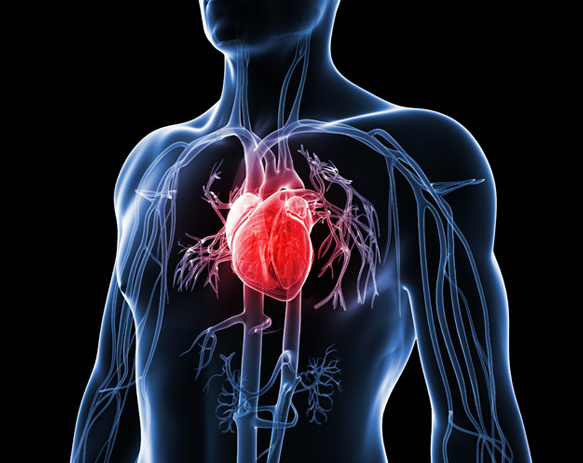Heart Attacks. Myocardial Infarcts | Coronary Infarcts.

The standard explanation of heart disease is based upon assumptions, statistics and interpretation. Plaque and cholesterol are indeed found within the arteries of some heart attack patients. This cannot be denied. Plaque and cholesterol creating a blockage initiating a heart attack though, is an interpretation.
We are told that high blood pressure, cholesterol, smoking, family history, lack of exercise and fatty diets are all potential culprits.
It has even been theorized that not brushing one’s teeth twice daily is a potential risk factor.
Dr. Hamer has shown us that there are actually two different kinds of heart attacks originating from completely different biological conflicts. We have myocardial infarcts and coronary infarcts. Let’s look at myocardial first.
Since relationships play a vital role in heart attacks it is crucial to accurately determine that persons laterality in order to ascertain the correct relationship (mother/child or partner) responsible for the conflict. Keep in mind due to quirks in the evolutionary development of the heart – the traditional laterality affects are reversed. (I know, yawn.)
The biological conflict associated with the heart muscle (myocardium) is an absolute and complete state of overwhelm. Feeling overburdened. Feeling like you cannot take (on) anymore. A negative stress overload, if you will.
During the conflict active phase the striated heart muscle responds by going through a necrosis or microscopic breakdown process which is governed by the cerebral medulla. There may also be a subtle paralysis which is governed by the motor cortex. In intense conflict activity, this will be experienced as weakness and shortness of breath upon exertion.
Once the conflict is resolved the heart attack (infarct) will occur within forty-eight hours. At the peak of the resolution, during an intense epi-crisis – the striated muscle fibers can tear, scarring the heart muscle. This scarring is erroneously attributed to apoxia (a lack of oxygen from blocked arteries) when in truth the scarring is the result of tearing.
This alone calls into question the causal interpretation of a damaged heart muscle after a heart attack. When the right heart muscle is affected – high blood pressure, a slow heart rate (bradycardia) as well a rapid and irregular heart rhythm (a quivering) along with cramping of the heart muscle will be evident. At times, breathing may temporarily stop along with a loss of consciousness.
When the left heart muscle is affected – a fast heart rate (tachycardia) and low blood pressure are evident. If the blood pressure drop is acute and dramatic, the individual may lose consciousness.
As mentioned above, Dr. Hamer has shown us that there are in fact two types of heart attacks originating from completely different biological conflicts. We just covered myocardial infarcts, so let’s now take a gander at coronary artery infarcts.
When dealing with coronary heart attacks, the biological conflict for a right handed male for example is a territorial loss (it would have to be the second territorial loss for a left handed male.) A territorial loss can be the loss of our domain – a home to foreclosure, natural disaster, divorce. The loss of a business to a competitor, a merger, a terminated lease, cutbacks or even a downturn in the economy. Our family, friends, clients can be part of our domain and a loss through an unexpected death, divorce or even a transfer can be experienced the same. A loss of our immigration status, our possessions as well.
For a left handed female, the conflict will be a sexual one. A molestation, rape or rejection, e.g. For a right handed female it would have to be her second sexual conflict. During the conflict active phase, angina pectoris, to varying degrees may be evident (someone what less likely for a left handed male.)
At the moment of the biological conflict (dhs) and while the individual remains conflict active, there is an ulceration process (microscopic cell loss) that will occur within the intima of the coronary arteries. This will often be experienced as angina pectoris. There is a meaningful reason for this; the widening of the vessel is to allow more blood and oxygen to the heart in order to increase performance to assist the individual in regaining the lost territory. In other words, to facilitate a conflict resolution. Once resolved, the coronary heart infarct (the epileptoid crisis) will occur within two to six weeks as the ulcers heal and the intima of the coronary arteries swell.
During the healing phase, cholesterol will naturally elevate (this is desired!) Cholesterol is ideal for repairing the ulcerations that occurred in the blood vessel wall during conflict activity. LDL cholesterol, which in the standard medicine is labeled as “bad” cholesterol is ideal for repairing the damage, as it is more “sticky” than HDL.
The heart attack is misunderstood to be the result of a coronary occlusion. In reality, the event is occurring on the brain level as the edema pressing on the coronary artery and vein brain relay is responsible for the cardiac arrest.
When the coronary veins are involved we may see a lung embolism as well.
This blog is an educational only blog. The information and services contained herein should not be construed as a diagnosis, treatment, prescription or cure for disease.Those seeking treatment for a specific disease should consult with their physician in order to determine the proper, correct and accepted treatment protocol before using anything that is disclosed on this page. Please visit our Legal page for more information.

